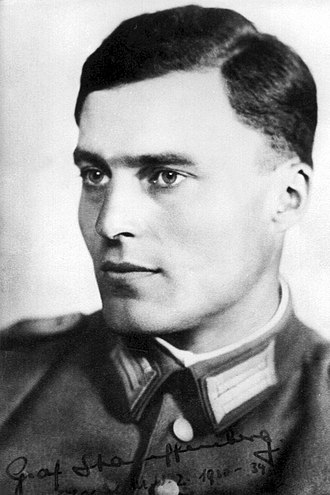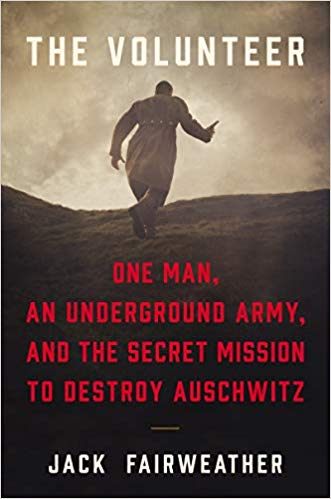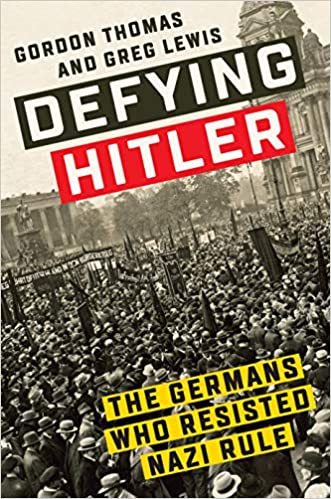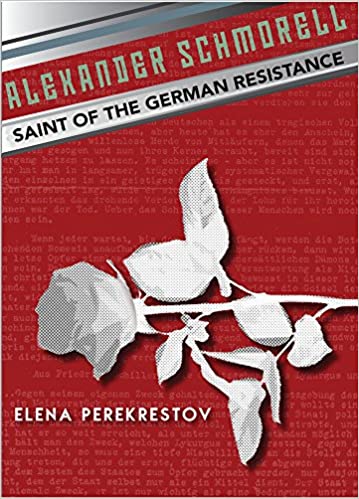A Library Guide to German Resistance to Nazism

Introduction
Throughout World War II, the various countries that came under Nazi occupation had their own resistance movements. There was a resistance movement in France, in Poland, in Greece, etc. This is a guide to resources about the people in Germany who resisted Nazi rule. Wherever possible, I have tried to direct attention to common domain resources available online, but I have also referenced sources available at Whitworth Library.
For an introduction to the German Resistance, see the entry on ‘German Resistance to Hitler’ in the Holocaust Encyclopedia.
Internet Resources
- Libcom.org contains blogs on topics related to the German resistance, with links to research sources, photographs, and podcasts.
- Spartacus Educational is a website that offers a breadth of scope for each of the major players in German opposition to the Third Reich. It also offers references to key primary and secondary sources for students wishing to read further about these brave men and women. This resource is not arranged to give the student a broad overview of the German resistance, but just links to specific figures within it. It is a great supplement for a student wishing to learn more about specific figures.
The German Resistance Memorial Center
- This Center and its associated website is devoted to “remembrance, political studies, active learning, documentation, and research.” Their website offers a wealth of information on an entire series of topics related to the resistance, from the resistance of artists and intellectuals to specific resistance movements like the White Rose movement. The site has also published a wealth of original documents.
Subject Headings
Some subject headings:
-
- Anti-Nazi movement
- Anti-fascist movements
- Underground movements — Germany
- National socialism
- Attempted assassination.
- Germany – History – 1933-1945
- Anti-Nazi movement – biography
- Anti-Nazi movement – Germany

Books
Books available from the Harriet Cheney Cowles Memorial Library at Whitworth University
- Eric Metaxas, Bonhoeffer: pastor, martyr, prophet, spy. BX4827.B57 M48 2010. This detailed biography of Bonhoeffer not only tells about Bonhoeffer’s resistance to National Socialism, but gives an impressive overview of the general resistance movement, its key players and concerns.
- Michael Geyer and John W. Boyer (ed), Resistance against the Third Reich, 1933-1990, DD256.3.R38 1994. This book is a collection of historical essays by different scholars, highlighting specific players in the German resistance.
- Wilhelm von Schramm, Conspiracy among generals, DD256.3.S343. This is a translation from a primary source, and although it is not a full translation, it offers a valuable inside glimpse of a key play nivolved in the German resistance.
- Klemens Von Klemperer, German resistance against Hitler: the search for allies abroad, 1938-1945. Online access. This book shows how the German resistance were not working alone, but sought to find support among the Allied nations and agencies.
Books available through inter-library loan:
- Marc E. Vargo, Women of the Resistance : eight who defied the Third Reich
- Gordon Thomas, Defying Hitler: the Germans Who Resisted Nazi Rule
- Eberhard Zeller, The Flame of Freedom : the German struggle against Hitler
- Jürgen Heideking, Christof Mauch, Marc Frey, American intelligence and the German resistance to Hitler: a documentary history
Reference Sources
There are a number of bibliographies, encyclopedias, and dictionaries which will be useful to you when researching the German Resistance. Your local library will likely be able to obtain these books on inter-library loan. Here are some of them.

Christian Zentner and Friedemann Bedürftig, trans. Amy Hackett, The Encyclopedia of the Third Reich, Da Capo Press, 1997. Some features of this encyclopedia include the following:
- This encyclopedia has more than 3,000 entries, written by German historians
- There are many articles in this volume about the various resistance movements and key players in the German opposition to the Third Reich.
Wolfgang Benz and Walter H. Pehle, trans. Lance W. Garmer, Encyclopedia of German Resistance to the Nazi Movement (1996: Continuum Intl Pub Group). Some features of this encyclopedia include the following:
- This encyclopedia covers common resistance groups, as well as less known resistance groups such as the Jehovah’s Witnesses
- First published in German in 1994,
- Includes 10 essays by German historians and political scientists plus short entries on particular topics
- Divided into three parts. First part offers overview of Nazi resistance organized by subject group. Second part is all different resistance topics, groups, and events. Third part is biographies of major players.
- Good biographical notes for further reading
Databases
- Historical Abstracts. This searchable database indexes a vast array of historical publications, including thousands of articles about Germany during the second world war.
- Jstor. The online repository of journal articles contains a wealth of material about the German resistance movements.
- Academic Search Complete. Although this database is not specifically related to history, it does index numerous articles relating to WWII historical scholarship.
Journals
German History: The Journal of the German History Society
- This quarterly peer-reviewed journal published by Oxford University Press gives an array of information on all aspects of German society, including WWII and the resistance movements.
German Studies Review
- Established in 1978, this triannual journal explores all aspects of German history, literature, culture, and politics. Its archives contain information about the resistance to Nazismduring WWII.
Oxford German Studies
- This quarterly peer-reviewed journal covers all aspects of German studies, including history and the period of National Socialism.
Spotlight on Featured Resources
Defying Hitler: The Germans Who Resisted Nazi Rule, by Gordon Thomas and Greg Lewis.
Gordon Thomas, Greg Lewis’s book Defying Hitler: The Germans Who Resisted Nazi Rule is very wide in scope, exploring everything from early German opposition to Fascism through to the Valkyrie plot and its tragic aftermath. The book does not offer scholarly detail, yet for students wishing to gain a broad overview of German resistance to the Third Reich, this should prove to be an extremely useful resource. The various chapters in this book focus on the small pockets of resistance that rose up in opposition to Hitler and his government. In telling the interweaving stories of the various pockets of German resistance from 1939 through to 1945, the reader gets a good sense of the overall landscape of Germany at this time, and the courageous men and women who stood against National Socialism.
The 2008 film Valkyrie, is an historical drama starring Tom Cruise depicting the “July 20 Plot.” This conspiracy to assassinate Hitler was the culmination of years of careful planning on the part of the German underground. The plan called for Colonel Claus von Stauffenberg, a German war hero and collaborator with the resistance movement, to deploy a bomb in a conference meeting at Hitler’s East Prussian headquarters. The bomb, which had been smuggled into the meeting in a briefcase, exploded as planned shortly after the Colonel quietly excused himself from the room. Even though four people were killed by the blast, Hitler himself received only minor bruising.
Alexander Schmorell: saint of the German resistance, by Elena Perekrestov.
This book tells the entire story of Alexander Schmorell, as well as offering a breadth of context about the White Rose student resistance movement in which Schmorell’s resistance activities took place. The work is highly accurate, building on existing scholarship about the White Rose student movement and integrating it with recently surfaced documents about Alexander Schmorell. This book contains much information that has never before been published in English, and some information that has not even been published at all, such as interviews and newly surfaced memoirs. The author also has a video where she discusses Alexander Schmorell and the spiritual implications of his canonization for Eastern Orthodox Christians.
The Volunteer: One Man, an Underground Army, and the Secret Mission to Destroy Auschwitz, by Jack Fairweather
In addition to these resources about the German resistance to Nazi’s, there is a wealth of literature about pan-European resistance during WWII. One such book is Jack Fairweather’s book The Volunteer: One Man, an Underground Army, and the Secret Mission to Destroy Auschwitz. This book tells the story of Witold Pilecki, a member of the Polish resistance who volunteered go to Auschwitz as a prisoner so he could report on conditions to the Allies and expose German atrocities.

Witold was able to gradually develop a resistance network within the camp, mainly among the other inmates but it also included some sympathetic Germans. Using these contacts, he obtained exact details about the numbers of mass executions. Witold watched and documented the transition of Auschwitz from simply one of German’s many prison camps to a machine for killing on an industrial scale.
Many of Witold’s diaries and coded messages have only recently come to light. Jack Fairweather published his account of Witold Pilecki’s daring mission, following years of meticulous research. The book is not pleasant reading, as the details of what happened at Auschwitz defy comprehension. But at the same time the book is uplifting and inspiring, since it shows an ordinary man working in obscurity to save innocent people.
After the war, Witold continued to be haunted by what happened in the camp, and never stopped writing reports about what he observed. One of these reflections contained the following observation:
“I have listened to many confessions of my friends before their deaths. They all reacted in the same unexpected manner: they regretted they hadn’t given enough to other people, of their hearts, of the truth…the only thing that remained after them on Earth, the only thing that was positive and had a lasting value, was what they could give of themselves to others.”



